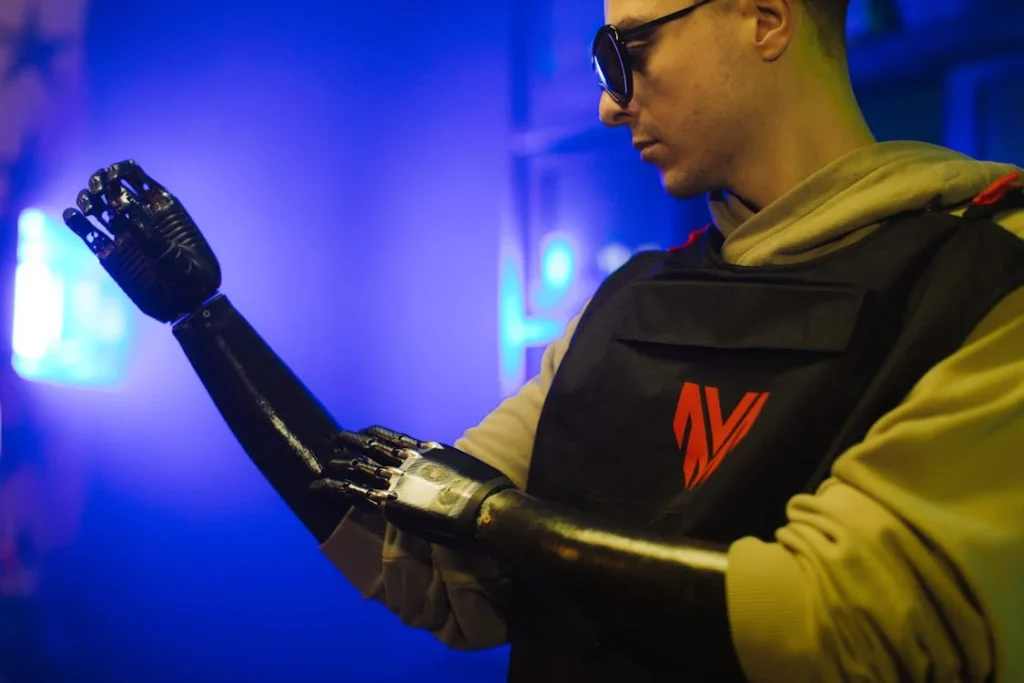Recovery after an amputation or serious injury can feel like climbing a steep hill. Some days are full of hope. Other days are filled with pain and frustration. It’s not just about healing the body—it’s about healing the mind and heart too.
At Robobionics, we meet many people who are on that journey. One of them is Aarav (name changed for privacy), a young man who lost part of his arm in an accident. He was bright, full of dreams, and determined to get back to his life. But like many, he struggled with the long, slow process of rehabilitation.
Then came a turning point. Not with more medicine. Not with more hospital visits. But with something that felt more like play than work—a tool we call Gamified Rehab.
This is the story of how Aarav used gamified rehabilitation to regain control, strength, and hope. It’s not just a case study. It’s a journey of resilience, smart tech, and human spirit.
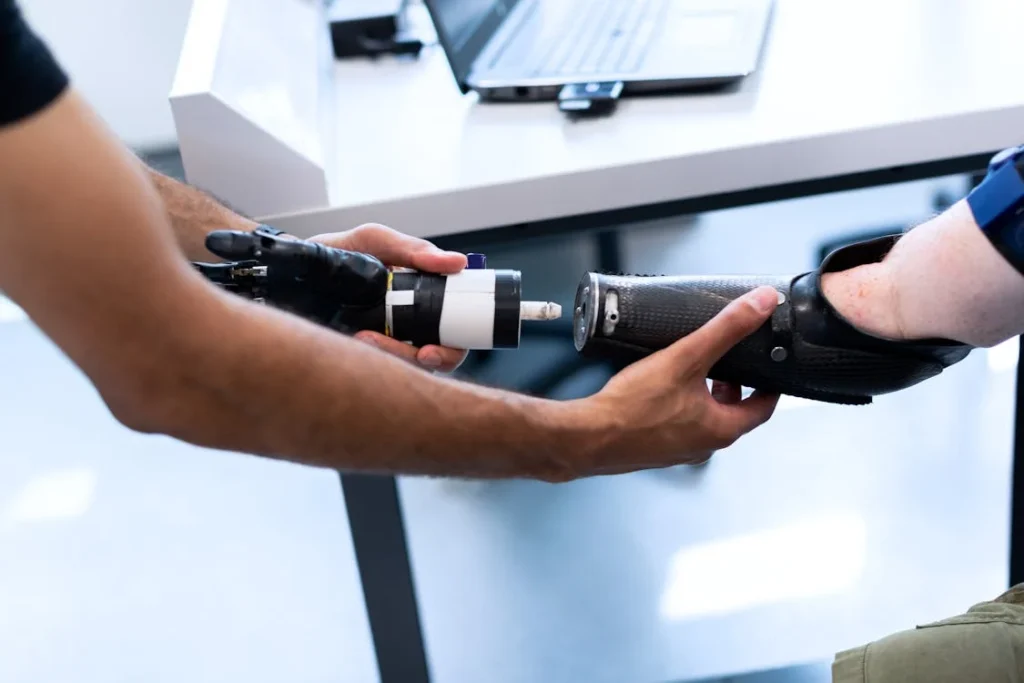
Understanding the Challenge: Life After an Amputation
Aarav’s Turning Point
When Aarav lost his arm below the elbow, his world changed overnight. He had always been independent. He loved working with his hands, helping out in his family’s workshop, and playing cricket with his friends on weekends.
But after the accident, even simple things like brushing his teeth or tying his shoelaces became difficult. Every task reminded him of what he had lost. More than the physical pain, it was the emotional struggle that hit the hardest.
In the early weeks after his surgery, Aarav was flooded with questions. How would he live the rest of his life like this? Would he ever work again? Could he ever feel normal? His family tried to be strong, but they were worried too.
Rehabilitation was suggested, and while the doctors explained its importance, the truth is, Aarav didn’t feel excited. Traditional therapy sounded slow, boring, and painful. He imagined endless hours of stretching, exercises, and machines that looked more like hospital equipment than anything he wanted to use.
That’s when he heard about Robobionics and our unique approach. Not just our advanced prosthetics, but something very different—the Gamified Rehabilitation App.
The First Step: Building Hope Through Play
Aarav met with our rehab specialist at one of our partner prosthetic centers. We introduced him to the Grippy™ Bionic Hand and the rehab app designed to help users learn how to control their new prosthesis in a fun and engaging way.
He was skeptical at first. How could a mobile app with games help him recover his arm strength and coordination? But the moment he picked up the tablet and started playing, something shifted.
The app wasn’t about scoring points or competing with others. It was about reconnecting with his muscles and teaching his brain how to send the right signals again. Every time he played a game, his muscles fired up and his bionic hand responded. Aarav was amazed. He wasn’t just “playing”—he was practicing real movements that translated to everyday tasks.
Instead of dreading rehab, Aarav started looking forward to it. He played the rehab games twice a day. At first, it was hard. His hand would shake. Sometimes, it wouldn’t respond at all. But with each session, his control improved. The best part? He didn’t even realize how much progress he was making because he was having fun.
Small Wins That Made a Big Difference
As weeks passed, something beautiful happened. Aarav started using the Grippy™ hand outside the sessions. He used it to pick up a glass of water, hold a spoon, and even high-five his little brother. These weren’t just movements—they were victories. Each task he could do by himself made him feel stronger, more capable, more alive.
Gamified rehab kept him going when things got tough. On days when his energy was low, the colorful graphics, sound effects, and simple interface of the app pulled him back in.
The app gently challenged him, always matching his pace, never pushing too hard. This balance was key. Aarav was no longer a patient. He was a player, a learner, a fighter.
By the third month, he could do most daily tasks independently. His muscles had grown stronger. His brain-muscle coordination had sharpened. And most importantly, he had started smiling again—not just because of what he could do, but because of how he felt.
Why Gamification Works
Gamification isn’t just a fancy word. It’s a powerful tool backed by science. When people are rewarded for small efforts, they stay motivated. When they can track their progress in real-time, they feel in control. And when therapy feels like a game instead of a chore, they stick with it longer.
Our app uses these principles to gently guide users through their rehab journey. It takes something as complex as muscle signal training and wraps it in colorful, interactive experiences. This makes the brain more receptive, the hands more coordinated, and the heart more open to healing.
For Aarav, this approach wasn’t just effective. It was life-changing. He no longer felt like a victim. He became an active participant in his own recovery.

The Science Behind Gamified Rehab
How Muscles, Signals, and Games Work Together
At the heart of our gamified rehab is something called myoelectric control. It sounds complicated, but it’s actually quite simple. When we move our muscles, they give off tiny electrical signals. Even after an amputation, the muscles in the residual limb still produce those signals when the brain tells them to move. A bionic hand like Grippy™ can pick up those signals and use them to open, close, or rotate—just like a real hand.
But here’s the catch. Using a bionic hand is like learning to play a new instrument. The signals need to be strong, clear, and sent at the right time. And the only way to get good at it is practice. That’s where gamified rehab comes in.
Instead of doing boring exercises over and over again, users can play interactive games that help them build the same skills. The games are designed to strengthen the muscles, improve coordination, and sharpen reaction times—all without the pressure of formal therapy.
Aarav’s rehab game sessions included fun tasks like catching falling objects, squeezing virtual stress balls, or controlling a car on a screen. Behind the scenes, the app was analyzing his muscle signals, tracking how accurately and quickly he responded. It gave instant feedback—if he was too slow or his grip was too tight, he would see it immediately and adjust. The learning was fast, fun, and always personalized.
Motivation Matters
One of the hardest parts of any rehab program is staying motivated. In traditional physiotherapy, many users feel like they’re just going through the motions. It can be exhausting, repetitive, and emotionally draining. For someone recovering from limb loss, the emotional weight is already heavy. Add in a dry, mechanical routine, and it’s easy to feel discouraged.
Gamified rehab flips that experience. Instead of being told what to do, users are invited to play. The bright visuals, encouraging messages, and simple achievements help people stay engaged. Aarav often said it felt more like playing a phone game than doing “medical” work. And that was the magic. He would start a game to pass the time—and end up building strength and control without even realizing it.
Each game was carefully designed to focus on different types of movement. Some helped him practice grip strength. Others focused on wrist rotation or fine finger control. The app adjusted to his ability level, so as he improved, the challenges became harder. This kept him from getting bored and gave him a constant sense of progress. Progress that he could feel, see, and celebrate.
More Than Just Physical Recovery
Aarav’s journey with gamified rehab wasn’t just about training his muscles. It helped rebuild his confidence. Before starting, he used to avoid going out. He didn’t want to answer questions about his missing arm. He was scared people would stare. But after a few months of training and seeing what he could do with his Grippy™ hand, his mindset changed.
He started wearing short sleeves again. He began visiting friends and helping out with chores. He even went back to the cricket field—not to play yet, but just to cheer his friends. It was a big step.
At Robobionics, we know healing isn’t just physical. It’s deeply emotional. Our gamified rehab app helps with both. The playful nature of the games lowers anxiety and helps people feel at ease with their prosthetic hand. They begin to see it not as a burden, but as a part of themselves.
Support at Every Step
Aarav’s progress was guided not just by the app, but also by regular check-ins with our team. Every few weeks, our specialists reviewed his data, adjusted the game settings, and offered tips. If he struggled with a particular movement, we would modify the game to help him practice that skill more often.
His family also played a huge role. His younger brother would sit beside him, watching the games and cheering him on. Sometimes they’d play together, with Aarav showing off what he could do. It turned rehab into a shared moment—something joyful, not lonely.
This kind of emotional support, combined with smart technology, made all the difference. Aarav never felt like he was doing this alone. He had a whole team behind him—and a powerful tool in his pocket.

From Recovery to Independence: A Life Transformed
Mastering the Everyday
A few months into his journey with the Grippy™ Bionic Hand and the gamified rehab app, Aarav began to experience what real independence felt like again. The once small wins—like lifting a spoon or holding a cup—grew into larger moments of confidence and control. He started helping his mother in the kitchen, peeling vegetables and serving tea. He could zip his jacket, tie his shoelaces, and hold his phone comfortably.
These everyday tasks are often taken for granted. But for someone like Aarav, each one was proof that he was gaining back his life. His hand no longer felt like a machine. It was becoming a part of him. His brain and body were working together again, in sync, and without conscious thought.
He began using public transport again, navigating crowds, handling money, and texting friends—all with his bionic hand. The fear of being dependent on others faded. What replaced it was pride. He could do things his own way, in his own time, without waiting for someone to help him.
All this came from regular practice—just 30 to 45 minutes a day of gamified rehab. That small, consistent effort made a big difference. The games gave his muscles the workout they needed and gave his mind the belief that he was capable.
Going Beyond Just Function
For Aarav, the journey didn’t end with just being able to do chores or daily tasks. Once he regained functional strength, he started setting higher goals. He wanted to return to the workshop and get back to the work he loved—fixing and building things. This required not just strength, but fine motor skills and grip precision.
With the Grippy™ hand, and help from advanced levels in the rehab app, he began practicing complex movements. The app now challenged him with games that needed precise grip control—like picking virtual beads or navigating small spaces. He practiced these movements until they became smooth and natural.
Soon, he was back at his family’s workshop, doing tasks like holding a screwdriver, twisting knobs, and adjusting parts. He even modified a few tools to better fit his new hand. What stood out was not just the function he regained, but the confidence he displayed.
He no longer felt different. He felt equipped.
Mental Healing Through Technology
One of the quiet, powerful changes we noticed in Aarav was how much his mood improved. In the early days after his accident, he rarely smiled. He avoided looking in the mirror. But after months of gamified rehab, something shifted. His posture improved. His laughter returned. He became curious again, asking questions about how the Grippy™ worked and exploring ways to make it even better.
This mental and emotional healing was perhaps the most beautiful part of the journey. Technology wasn’t just fixing a limb—it was helping rebuild a person.
Gamified rehab, by turning recovery into an experience filled with joy, achievement, and control, gave Aarav something that no pill or surgery could give: a sense of agency. He was no longer waiting for something or someone to make life better. He was actively shaping his recovery.
The Role of Family and Community
Throughout Aarav’s journey, his family played a central role. But what helped just as much was the support from the larger Robobionics community. Our team regularly connected with Aarav through video calls and in-person check-ins. We answered his questions, encouraged him, and made sure he never felt alone.
He also joined a peer group—other users who were using Grippy™ and the gamified rehab app. They shared stories, tips, and laughs. They celebrated each other’s milestones, no matter how small. That sense of belonging made a huge impact. When Aarav saw others like him succeeding, he believed he could do the same.
Recovery, we’ve learned, is not a solo journey. It needs tools, yes. But it also needs trust, care, and connection. Aarav’s story is proof that when you bring these things together—smart tech, loving family, expert guidance, and a dash of play—you don’t just rebuild an arm. You rebuild a life.
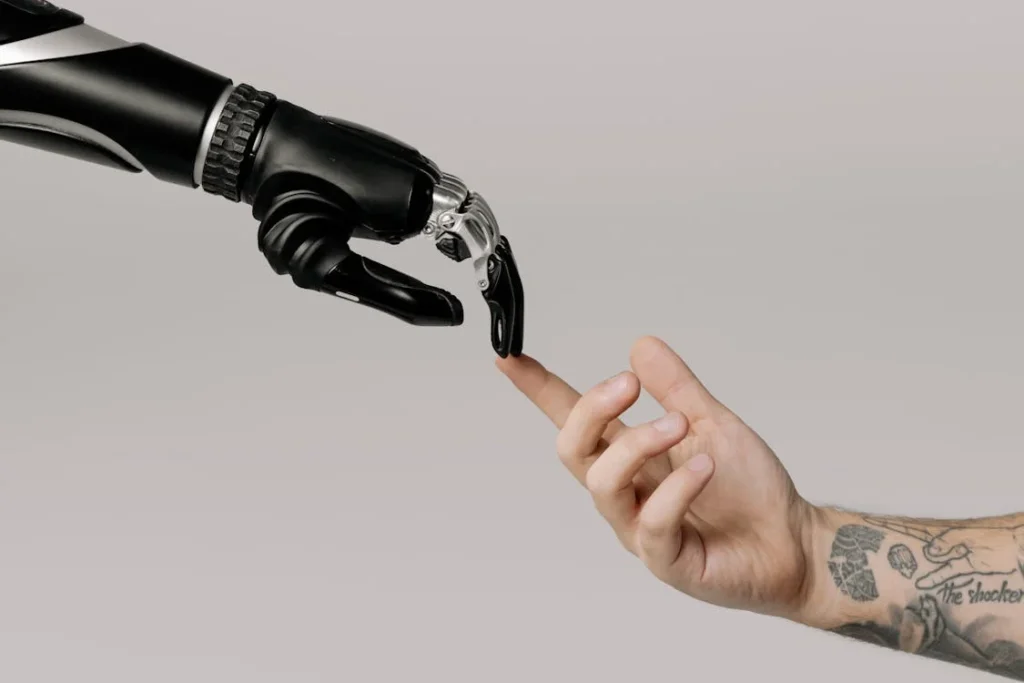
What Makes Gamified Rehab Different (and Better)
A Rehab That Feels Less Like Therapy, More Like Life
One of the biggest reasons Aarav’s journey stood out was how different his rehab felt from what most people expect. Traditional rehab often feels heavy—it’s full of routines, stretches, and clinical spaces. For many, it becomes something to endure, not something to look forward to. But gamified rehab turned that experience around. It became something Aarav enjoyed, even craved.
He didn’t have to sit in a clinic waiting for his turn. He didn’t need expensive machines or a therapist by his side every minute. He could practice on his own time, at home, whenever he felt ready. He had full control.
And it didn’t feel like work. He was chasing high scores, unlocking levels, exploring virtual worlds. But behind that playful surface, serious rehab was happening. His muscles were growing stronger. His grip was getting smarter. His coordination was becoming sharper. Without even realizing it, he was becoming better each day.
That’s what gamification does best. It hides the hard work under a layer of joy. It makes tough things feel simple. It rewards effort instead of just results. For someone healing from trauma, that shift can make all the difference.
Smart Data, Personal Progress
Every time Aarav played a game on the app, it collected data. Not personal information, but data about how his muscles responded, how fast he reacted, how steady his control was. This helped our rehab specialists understand his progress deeply. We weren’t guessing or hoping—we had real, measurable signs of improvement.
If his grip was getting stronger, the app noticed. If his reaction time slowed down, the app adjusted. Every movement he made taught the system how to support him better. This created a loop of constant improvement: Aarav played, the app learned, and Aarav improved.
This level of personalization is rare in rehab. But it’s a core part of what we do at Robobionics. We believe no two recoveries are the same. So, our tools shouldn’t be one-size-fits-all. Gamified rehab adapts in real-time, keeping users motivated without overwhelming them.
Accessible, Affordable, and Made in India
Aarav didn’t come from a big city or a wealthy background. His family couldn’t have afforded expensive rehab devices or imported prosthetics that cost over ₹10 lakh. And they shouldn’t have had to. Everyone deserves a chance to heal, to thrive, to regain control of their lives—no matter where they live or how much they earn.
That’s why our gamified rehab app is built to run on smartphones and tablets. It doesn’t need high-end gadgets. It doesn’t depend on fast internet. It’s light, simple, and built with care. Just like the Grippy™ Bionic Hand, which is proudly made in India, the rehab app is designed with real Indian users in mind.
We don’t believe in cutting corners. But we do believe in cutting costs—by building smarter, using local materials, and focusing on what matters most: results. Aarav’s success story didn’t come from luxury—it came from a tool that worked, a hand that fit, and a system that cared.
More Than a Product—A Movement
At Robobionics, we often say that we don’t just build prosthetics. We build possibilities. What Aarav achieved wasn’t just the result of a clever hand or a smart app. It was the result of a shift in mindset—from passive healing to active recovery. From therapy to play. From waiting to doing.
And Aarav isn’t alone. Every month, more users across India are picking up the Grippy™ hand, downloading the gamified rehab app, and starting their own journey. They come from villages, towns, and cities. They speak different languages, follow different dreams. But what unites them is a desire to live fully again.
This is more than just technology. It’s a new way of thinking about rehab. It’s about giving people the tools they need to heal on their own terms. It’s about returning dignity, control, and joy to those who’ve lost so much.
And it’s only the beginning.
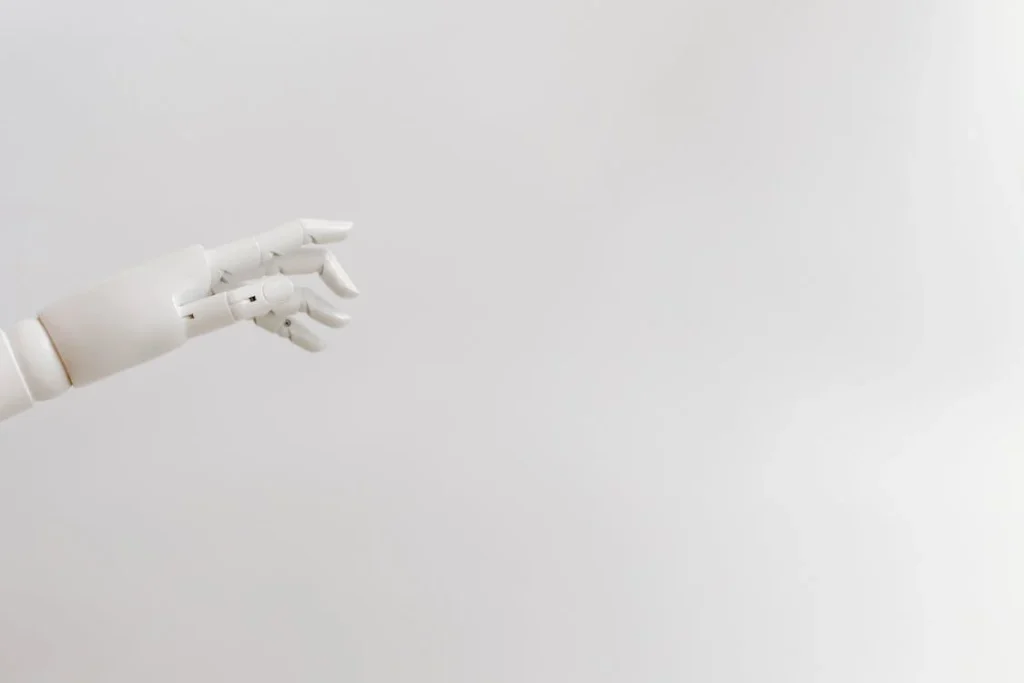
Helping the Young Heal: Why Gamified Rehab Works Wonders for Children
When Healing Feels Like a Game, Kids Don’t Want to Stop
Aarav’s journey wasn’t only inspiring for adults. As he progressed in his recovery, something unexpected happened. Children from his community, including a young boy named Ishaan who had also lost part of his arm, started looking up to him. Ishaan was shy, withdrawn, and unsure how to even begin using his new mechanical hand. His parents were worried that he wouldn’t engage in therapy at all.
Then he saw Aarav playing games on the rehab app.
At first, Ishaan just watched from the corner, silent. But when he saw a bright animated fish swimming on Aarav’s screen—controlled not by fingers, but by Aarav’s muscle movements—his eyes lit up. He asked if he could try.
That one moment opened a door.
Within days, Ishaan began using the rehab app too. And unlike traditional rehab, which often feels intimidating or repetitive to children, the games made him feel brave. They were colorful, filled with sounds, and gave quick rewards for even small efforts. He wasn’t scared anymore. He was curious.
This isn’t rare. Children often respond to gamification much more quickly than adults. Their brains are wired for play, for reward, and for exploration. When you pair physical therapy with game-based learning, especially in a friendly, non-medical interface, you create a space where they can thrive.
Designing with Children in Mind
At Robobionics, we designed our gamified rehab app to be intuitive enough for older adults, but lively and engaging enough for younger users. The fonts are large, the navigation is simple, and the graphics are playful. Every game is designed to mimic real movements—gripping, turning, reaching—so kids are learning and training without even realizing it.
We noticed that children, especially between ages 7 and 15, tend to mirror what they see. When they see other kids or even adults like Aarav using their bionic hand to play games, they naturally want to try too. It builds a sense of fun, not fear.
More importantly, gamification removes the stigma of disability. Kids don’t see the prosthetic as a reminder of what’s missing. They see it as a cool tool. Like a gadget from a superhero movie. That shift in perception is incredibly powerful for young minds.
The Power of Role Models and Representation
Aarav unknowingly became a mentor. He began helping kids like Ishaan navigate the app, showing them how to adjust the levels and beat each challenge. He wasn’t just someone who had “gotten better.” He was someone they could become. That mattered.
For kids recovering from limb loss, representation is everything. They need to see others like them succeeding—not just in therapy, but in life. Gamified rehab creates moments of shared success. When one child levels up in the app or manages to complete a task with their bionic hand, the whole group celebrates.
This sense of community—one filled with laughter, games, and support—is unlike anything in traditional therapy settings. It feels like playgroup, not rehab. And that’s exactly what children need.
Learning That Sticks
One of the biggest benefits of gamified rehab for children is how deeply they absorb what they learn. Kids are natural learners when they’re engaged. The repetitive nature of the games—press, hold, release, rotate—builds muscle memory faster than worksheets or structured drills.
And because the app rewards progress, even the shyest children begin to push themselves. They want to earn stars. They want to unlock characters. They want to win—not against others, but against their own limits.
Over time, this turns into mastery. We’ve seen children who once struggled to hold a pencil now write full sentences with their Grippy™ hand. Not because someone forced them, but because a game taught them how.
Gamified rehab doesn’t just help children recover—it helps them grow stronger, faster, and more confidently.
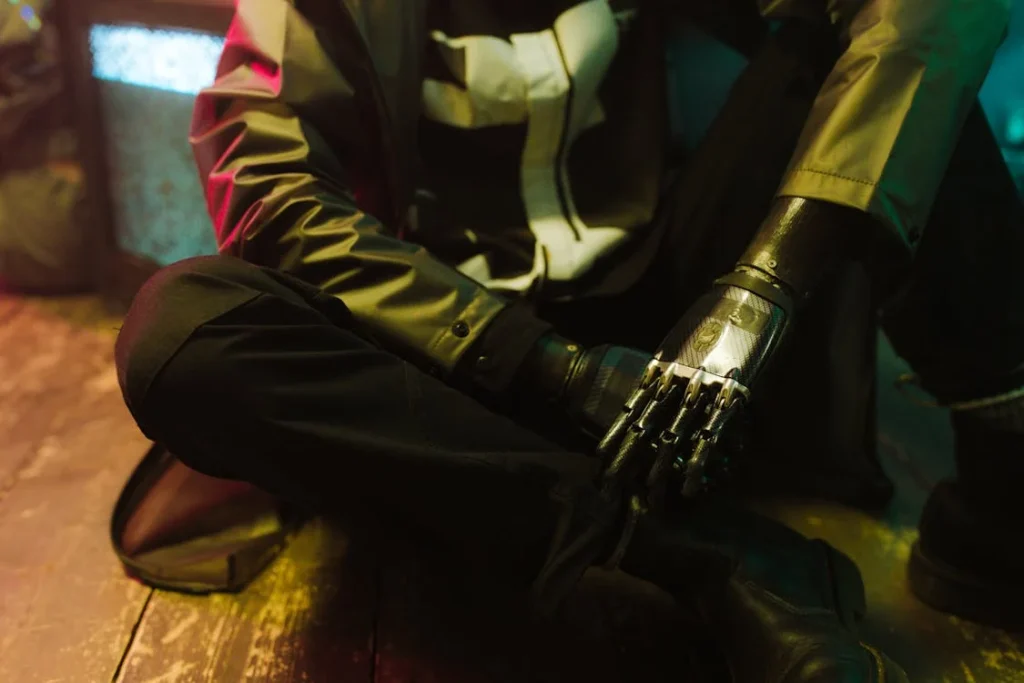
Healing the Mind: How Gamified Rehab Builds Emotional Strength
Beyond Muscles—The Emotional Weight of Limb Loss
When someone loses a limb, they don’t just lose a part of their body. They lose routines, habits, and often their sense of identity. Tasks that once took seconds now take effort and thought. Mirrors become reminders. Outings become challenges. Conversations shift, even with loved ones. It’s not uncommon for people to feel isolated, anxious, or even angry.
Aarav experienced this deeply. In the early weeks, he avoided mirrors and barely spoke during appointments. His eyes rarely met anyone’s. He was quiet, not because he had nothing to say, but because the words couldn’t find their way through the grief.
Traditional therapy can heal wounds. But emotional healing needs something deeper—something that brings back joy, choice, and control. That’s where gamified rehab did something remarkable.
The Power of Play in Processing Trauma
There’s a quiet magic in play. When we play, we are fully in the moment. We stop worrying about yesterday or tomorrow. We focus, react, and feel a sense of flow. That feeling alone can be healing.
For Aarav, those first few sessions with the rehab app felt like an escape. He didn’t have to explain how he was feeling. He didn’t have to put on a brave face. He could just play. And in that space, something inside him began to shift.
Every small win—catching a falling fruit, guiding a bird through hoops, lifting a virtual object—sparked a tiny light. These weren’t just game scores. They were messages to his brain that said, “You can still do this. You still have control. You are not broken.”
That kind of feedback, repeated daily in a safe, private space, worked like therapy. He began smiling again, asking questions, even joking about beating his own high scores. His family noticed first. Then his therapists. Then Aarav himself.
The games weren’t just training his hand. They were teaching his heart to hope again.
Gamified Rehab as a Mood Lifter
The design of the gamified rehab app wasn’t accidental. Every element—colors, sounds, animations—was chosen to lift mood and reduce anxiety. Calm music during loading screens. Gentle, positive feedback after each task. Bright, friendly visuals. These may seem small, but they add up.
We’ve heard from many users that the app becomes a bright spot in their day. Especially for those who struggle with long-term depression or post-traumatic stress after their injury, this matters deeply. It’s not about pretending the pain doesn’t exist. It’s about creating room for joy alongside the struggle.
In Aarav’s case, rehab became more than recovery. It became self-care. On tough days, it was a place to feel better. On good days, it was a place to feel powerful.
From “Why Me?” to “Watch Me”
Perhaps the most powerful emotional shift happens when users begin to see themselves not as patients, but as survivors. They move from “why did this happen to me?” to “watch what I can do now.”
This mental pivot is life-changing.
Gamified rehab gives users a way to rebuild their story. Not with lectures or therapy sessions—but with action. They control the game. They shape the outcome. They see the results. That sense of agency is incredibly healing.
Aarav went from avoiding social outings to proudly showing his Grippy™ hand to friends. From shrinking in discomfort to walking tall in public. From being unsure of his future to inspiring others on a similar path.
And it all began with a game.
Conclusion
Aarav’s story isn’t just about one person’s recovery. It’s about what becomes possible when smart technology meets human care. With the Grippy™ Bionic Hand and our gamified rehab app, he didn’t just regain arm function—he reclaimed confidence, dignity, and joy.
This is the future of healing. Rehab that feels less like a chore and more like a game. Tools that are easy to use, made in India, and built for real people. A path where every user—adult or child—can recover on their own terms, at their own pace, with a smile on their face.
At Robobionics, we believe no one should have to choose between affordability and innovation. Aarav’s journey proves what’s possible when we design with heart, listen with care, and build with purpose.
Ready to start your journey or help someone you love?
Book a free demo today.
Let’s rebuild more than limbs. Let’s rebuild lives. Together.



